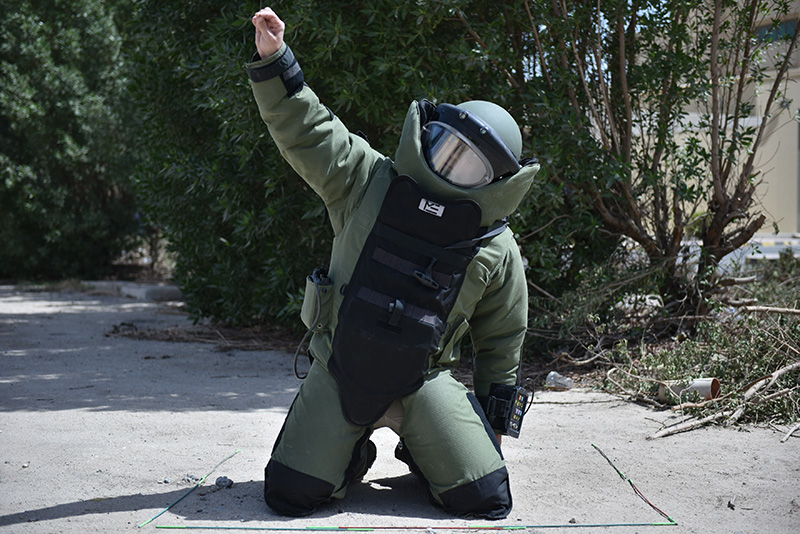Mine clearance
Mine clearance is applied in areas contaminated by landmines. Due to the design and means of activation, clearance of such areas is a slow process. Landmines are typically made of metal or plastic and, if made of the latter, are often difficult to detect due to their minimum metal content.
Battle area clearance
Battle area clearance (BAC) procedures are applied to areas where the explosive threat is known to not contain land mines. As with mine clearance the procedures involve a systematic search of an area down to a specified depth. Depending on the type of ammunition, terrain and intended land use, BAC may involve a surface search of an area by a team visually inspecting the ground on foot in search for explosive items.
It may also involve subsurface investigation using a range of different locators.
Once an item is located it will be assessed by an explosive ordnance (EO) expert. If assessed safe to move, it may be transported to a central demolition site. If assessed as unsafe to move, the item will be destroyed in situ.
Improvised explosive devices area clearance
Improvised explosive devices (IEDs) can require a more traditional mine action clearance methodology as they have been laid in a minefield pattern as per conventional mines. However, IEDs present a different technical challenge and require additional skills, equipment and procedures than those needed for traditional mine clearance.
IED clearance requires specially trained IEDD operators to remove the explosive threat.
IED area clearance refers to tasks or actions to ensure the removal and/or the destruction of all IED hazards from a specified area. SafeLane combines mine action procedures with IED disposal procedures to result in the final elimination of IED contamination with an area.
SafeLane is able to deliver IED clearance projects with the required knowledge, skills and attitude in the most challenging and austere operating environments.


